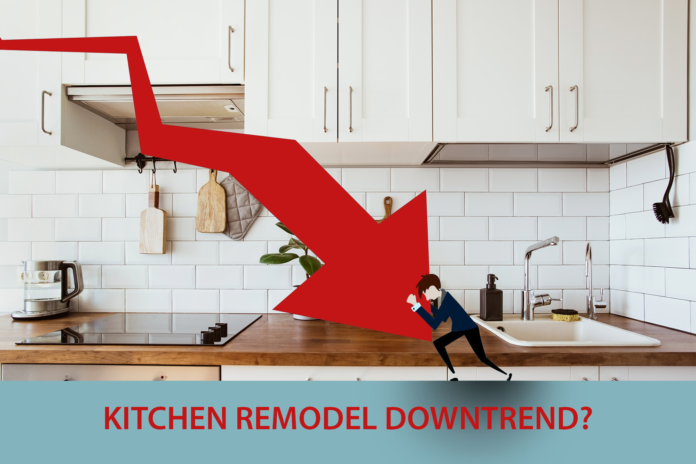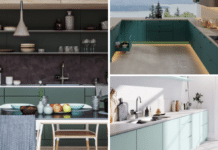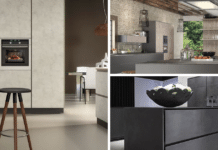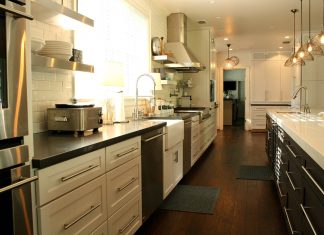The COVID-19 pandemic has led to a surge in home remodeling projects as people look to create their own perfect retreats. Cabinet material was out of stock, contractors were booked months in advance, and project leads for home professionals rose by a 58% annual increase.
While some people took on small projects like painting or decluttering, others went all out, gutting their kitchens or adding new rooms. For many, the home became not just a place to shelter from the pandemic but also a sanctuary to be enjoyed.
According to a recent report, the trend of home remodeling is on the decline. After years of steady growth, remodeling activity has begun to slow down, and many homeowners opt not to spend money on upgrading their homes. This has resulted in the current downtrend in the market for remodeling homes, particularly kitchens.
Reasons Why There’s A Kitchen Remodel Downtrend
There are several reasons for this change.
First, labor and materials costs have increased in recent years, making remodeling more expensive.
Second, the current economic climate is uncertain, and many people hesitate to make large financial investments.
Third, there are many options for people who want to buy pre-owned or newly built homes, meaning there is less need to remodel.
Whatever the reasons, it seems clear that the days of rampant home remodeling are over.
Pandemic Spike
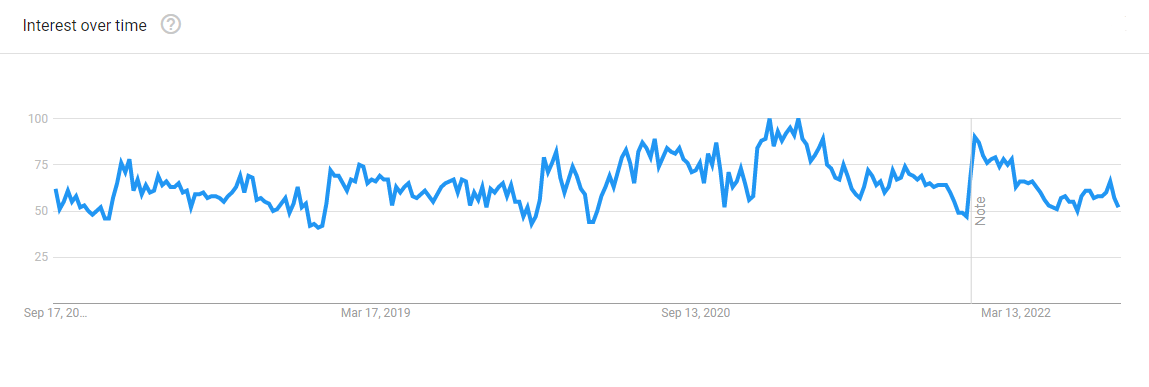
At the peak of the quarantine, many people stayed indoors to keep themselves safe. This increased the usage of kitchens, bathrooms in the house, and even outdoor patios. While some people may have found this to be a stressful time, others used it as an opportunity to focus on home projects they had been putting off.
For example, many people took on the challenge of cooking more meals from scratch, or they might have organized their pantry or installed new shelves. Some people also used this time to tackle home improvement projects, such as painting the walls, installing new flooring, or renovating an entire room.
Others took advantage of the extra time at home to finally start that garden they had always wanted. Whatever the project may have been, the quarantine clearly gave many people the chance to focus on their homes in a way they hadn’t before.
The pandemic has significantly impacted the global supply of raw materials. With factories shutting down and people working from home, demand has sharply dropped, leading to a shortage of many key materials. This has been particularly evident in the metals and mining sector, where the fall in demand has led to widespread layoffs and a major reduction in production.
The situation also has a knock-on effect on other industries that rely on raw materials, such as construction and manufacturing. The shortage of raw materials is likely to continue for some time as the world slowly recovers from the pandemic.
Recession

The pandemic has shocked the global economy, causing widespread supply shortages and price increases. One of the industries most affected is the cabinet-making industry.
With a sudden increase in demand for home renovations, costs of raw materials such as wood and metal have skyrocketed. This has caused a domino effect, with the cost of cabinets rising sharply for end users.
In some cases, the price of cabinets has doubled or even tripled. As a result, many homeowners must put their renovation plans on hold.
Economists have also urged people to save money, which has resulted in fewer purchases on large spending and the declining remodel downtrend. When consumers cut back on spending, it has a ripple effect throughout the economy.
For example, fewer people buying new kitchen cabinets results in lower sales for cabinet manufacturers. This, in turn, leads to layoffs and reduced spending by those workers. The reduced spending leads to even lower sales for other businesses, and the cycle continues.
Completed Jobs
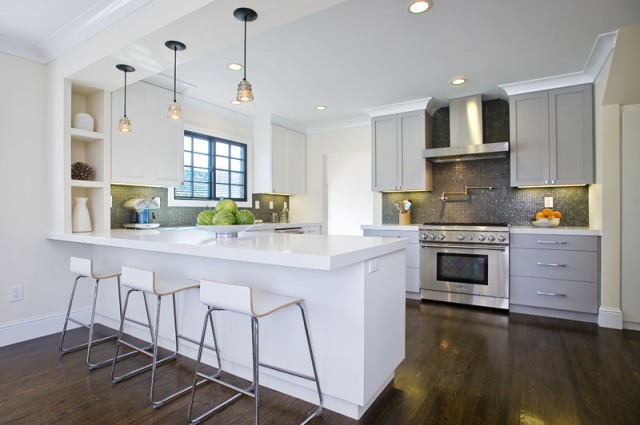
When the pandemic first hit, many people saw it as an opportunity to finally complete those home improvement projects they had been putting off for years. As a result, there was a surge in demand for remodeling services. However, as the pandemic dragged on, the initial activity burst slowed.
With so much uncertainty in the world, many people are no longer interested in making major home changes. Instead, they focus on more practical matters, such as ensuring their homes are clean and safe. As a result, the current demand for remodeling services has declined.
What Goes Into The Cost of a Cabinet?
So, what are the factors that affect the price of the cabinet?
Raw material
The raw material is the wood used for the cabinet exterior, shelves, and cabinet box. The cost usually changes depending on the wood. Lower-quality wood, such as plywood, is typically cheaper than solid wood, like walnut.
Hardware
Hardware typically refers to the handles but can include the screws, cam locks, door hinges, and drawer slides. Most RTA cabinets will have hardware for easier assembly, defaulting with cam locks and wooden dowels.
Labor or Craftsmanship
This includes painting, cutting, refinishing, and cabinet assembly. It requires art and technique to turn regular lumber into the recognizable kitchen cabinets we see in everyone’s homes.
There’s Still Interest in Home Remodeling
Even though the remodel downtrend is low, this does not mean homeowners are no longer interested in having a remodel done. During the pandemic, there was a spike in demand. However, not everyone completed the project or even scheduled a contractor in time.
The current economic market has also made it difficult to find qualified contractors, as many have left the field or joined the ranks of the unemployed. Despite all of these challenges, plenty of homeowners are interested in kitchen remodeling and willing to invest in their homes.
As the San Gabriel Valley’s population continues to grow, so does the demand for housing. However, with limited space available, many new condominiums and apartment complexes are being built to accommodate this need. Each unit in these complexes needs a kitchen and bathroom, so cabinets are constantly in demand.
Although the remodeling industry has seen a slight downturn in recent years, this has not significantly impacted the demand for cabinets.
Is it Too Late to Start? Of Course Not.
Many stores like Target and Walmart have actually overstocked inventory. As many countries return from the lockdown of COVID-19, the demand for luxury goods and unnecessary purchases has declined. This has caused many items to sit on store shelves. Cabinet companies are not an exception either.
Despite product price increases, more companies offer sales and discounts to move and sell products off warehouse shelves.

